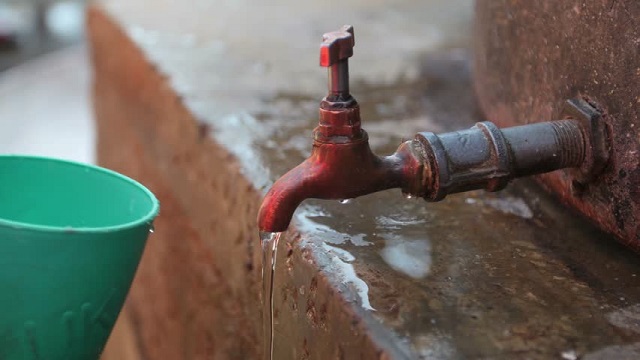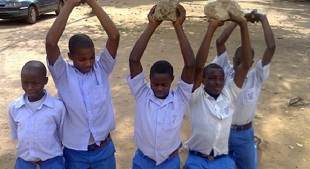
Why Ugandans are struggling finding water yet water is everywhere
Kampala, Uganda | RONALD MUSOKE | Ugandans might be blessed with many lakes, rivers and streams on top of being one of only 13 countries in the world able to receive rainfall for at least eight months every year but a recent study has found that more citizens think their access to water is getting worse.
The study titled, “Clean and safe? Ugandans’ experiences and opinions on affordable access to clean and safe water,” was released on June 27 in Kampala by Twaweza East Africa.
Twaweza’s survey under their Sauti za Wananchior “Citizen Voices” programme sought to gauge Ugandans’ experiences and opinions on affordable access to clean and safe water. The findings are based on data collected from 1,971 respondents across Uganda between January and February 2018.
The survey sought to find out how Ugandans are able to access water from a piped network or from any other improved source; how widespread—and how effective rainwater harvesting as an alternative source is and, how long it takes for people to collect water, and who bears this responsibility.
The study found that in both rural and urban areas, many people are forced to make difficult choices around cost, time, and convenience against health and hygiene. Interestingly, the survey notes that access to improved water sources is improving in rural areas with no major change in urban areas.
Three out of four Ugandans (74%) have access to an improved water source, meaning one that provides cleaner and safer water. Still, Ugandans in urban areas (86%) are more likely to use improved water sources than those in rural areas (69%), as are richer Ugandans (84%) compared to poorer ones (71%).
Overall, one out of four citizens (24%) have access to piped water but this is much higher in urban areas (46%, compared to 15% for rural citizens) and among richer Ugandans (51%, compared to 14% of poorer citizens).
Still, in both urban and rural areas, boreholes are the main source of drinking water for more households (rural 38%, urban 23%) than any other type of source. Just 2% of households have water piped into their dwelling.
One out of six rural households (15%) depends on surface water sources such as rivers, streams, dams and lakes, though this water can by very unclean. Rainwater can provide an affordable and accessible alternative source of clean water; and eight out of ten households (78%) harvest it.
Citizens in both rural and urban areas said there are fewer water points (43%) and distance to water points (39%). In the urban areas, although there is access to piped water, many households cannot afford this water. There is also the issue of irregular supply.
As a result, four out of ten citizens or 40% of Ugandans say their access to clean and safe water has worsened over the last 12 months, compared to three out of ten who say it has actually improved.
Further, for most households (69%), the rainwater they are able to harvest runs out after a week or less, the last time they collected it. Only one out of ten households (7%) was able to use it for a month or more.
When it comes to the amount of time spent fetching water, citizens in the rural areas are the most disadvantaged as it takes them one hour and 11 minutes on average to collect water in rural areas compared to 49 minutes in urban areas.
Despite these differences, a similar and substantial proportion of rural (14%) and urban households (10%), as well as richer (10%) and poorer (15%) households have to spend over two hours collecting water.
In one out of four households (25%), the responsibility for collecting water falls on the women, the female head of households or the wife of the household head. And in nearly two out of four households (48%), children are fully or partly responsible for this task.
Nationwide, and in rural areas, the two main challenges cited by citizens in accessing clean drinking water are linked; a shortage of water points (43%) and distance to water points (39%). In urban areas, the cost of water (36%) and irregular supply (29%) are mentioned the most.
A large majority of Uganda’s households (70%) treat their water before drinking, to make it safer. This is again higher in urban (82%) than in rural (65%) areas. It is also higher among wealthier households (89%) than among the poor (52%).
Most of these households boil their water (60%). Overall, citizens are not satisfied with the trends in access to water. Four out of ten citizens (40%) say their access to clean and safe water has become worse over the past 12 months, compared to three out of ten (30%) who say it has improved.
However, more citizens say their access to water is getting worse than it is getting better. Poor Ugandans (46%) and those ones who live in rural areas (44%) are more likely to say the situation is getting worse than those in urban areas (30%), and those who are relatively rich (28%).
As a result, half of the citizens (47%) are not satisfied or not at all satisfied with the performance of their local government in terms of providing water services. A minority—one out of four households (28%)—are satisfied with their local governments water services.
Few water sources
Nationwide, the two main challenges cited in accessing clean drinking water are linked: a shortage of water points (43%) and distance to water points (39%). In urban areas, the cost of water (36%) and irregular supply (29%) are mentioned most.
The average time required by rural households to collect drinking water is 71 minutes, of which 30 minutes are spent waiting at the source. The times are a little lower in urban areas: 49 minutes total collection time, of which 23 minutes are spent waiting. Two out of ten urban households (20%) and a similar number of wealthy households (25%) need less than five minutes to collect water.
In comparison, in the rural areas, 14% of households need over two hours to collect water, and even in urban communities, 10% of households take more than two hours to collect water.
Marie Nanyanzi, Sauti za Wananchi Officer at Twaweza, said “On the positive side, rates of access to improved water sources are high by regional standards and, according to other data sources, appear to have been steadily rising in both urban and rural areas.
Nanyanzi says the distance to a water source plays into the time it takes one to collect this water, the cost, and safety of this water.
In the rural areas, it takes over an hour to collect water and half of that time is spent waiting in the queue. In the urban areas, the time is much shorter (less than an hour) but still people will take an average of 20 minutes in the queue. About 20% of households collect water under 5 minutes and 25% of people in urban areas spend under 5 minutes.
These perceptions appear to contradict the findings from the Uganda Bureau of Statistics (UBOS) that access to water is improving. Looking at longer term trends, using data from surveys conducted by the Uganda Bureau of Statistics (UBOS), we can see a clear increase in access to improved water sources in rural areas since 1989, from around 40% of rural households in the early 1990s to around 70% now.
In urban areas, the increase has been less dramatic, from around 80% in the 1990s to around 90-95% now.
Dr. Mary Goretti Nakabugo, the Uganda Country Lead of Twaweza and Regional Manager, Uwezo East Africa noted that despite some important successes, the story around access to water is one of inequity, with rural areas facing more marked challenges than urban areas.
“The slower rate of growth in access to improved water in urban areas presents challenges for the future with population growth and increased rural to urban migration,” she said.
Nakabugo says the government will need to double down on efforts in both rural and urban Uganda to ensure that the hard-won gains of the last 20 years are not eroded.
Inconvenient water sources
Responding to the findings, Eng. Joseph Oriono Eyatu, the commissioner in charge of rural water supply and sanitation at the Ministry of Water and Environment said although the distribution of water sources appears to be everywhere on the map but once you reduce it to the micro level, it is not evenly distributed.
Eyatu said over 30 million Ugandans live in rural areas yet there are up to 122,737 water sources scattered across the country and these are not distributed evenly.
Eyatu said there are up to 12,000 LC villages that do not even have a single source of water but we also have villages that have over 10 sources. Some of those villages don’t even have a spring or borehole.
“It is the level of convenience which has gone down. This is why people are saying their access to water is getting worse,” he said, “Everybody wants a high level of water service. Everybody wants a borehole in their compound but it costs about Shs8million to sink one.”
“It could be cheaper to invest in a piped scheme but still this is beyond our reach at the moment,” he said, “We need to accept that Uganda is still a poor country.”
 The Independent Uganda: You get the Truth we Pay the Price
The Independent Uganda: You get the Truth we Pay the Price



